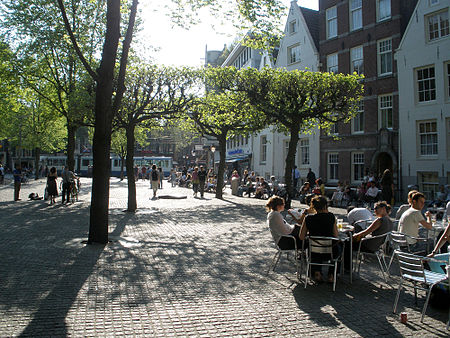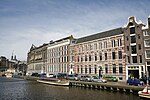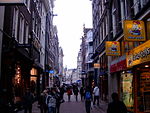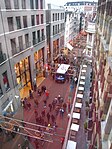Spui (Amsterdam)

The Spui (Dutch pronunciation: [spœy] (listen). In Old Dutch written as Spuy) is a square in the centre of Amsterdam, the capital of the Netherlands. The Spui was originally a body of water that formed the southern limit of the city until the 1420s, when the Singel canal was dug as an outer moat around the city. A spui is a lockable water discharge. The word is related to the Dutch verbs spuiten and spuwen, cognates of the English word spewing. Spui could therefore be translated as Spew. In 1882 the Spui was filled in and became the square that we know today. In 1996 the square was renovated and is now largely car-free. The Spui is hosts a weekly book market on Fridays and a variety of bookstores on or near the square, including two shops dedicated to English-language literature (the American Book Center relocated to the Spui in October 2006). There is also a weekly Sunday art market. The Spui provides entry to the Begijnhof, a Medieval courtyard.Tram lines 1 and 2 stop at Spui on Nieuwezijds Voorburgwal and tram lines 4, 14 and 24 and stop at the southern entrance of the Rokin metro station located just across Spui.
Excerpt from the Wikipedia article Spui (Amsterdam) (License: CC BY-SA 3.0, Authors, Images).Spui (Amsterdam)
Spui, Amsterdam Centrum
Geographical coordinates (GPS) Address Nearby Places Show on map
Geographical coordinates (GPS)
| Latitude | Longitude |
|---|---|
| N 52.368611111111 ° | E 4.8894444444444 ° |
Address
Spui 27
1012 WX Amsterdam, Centrum
North Holland, Netherlands
Open on Google Maps











